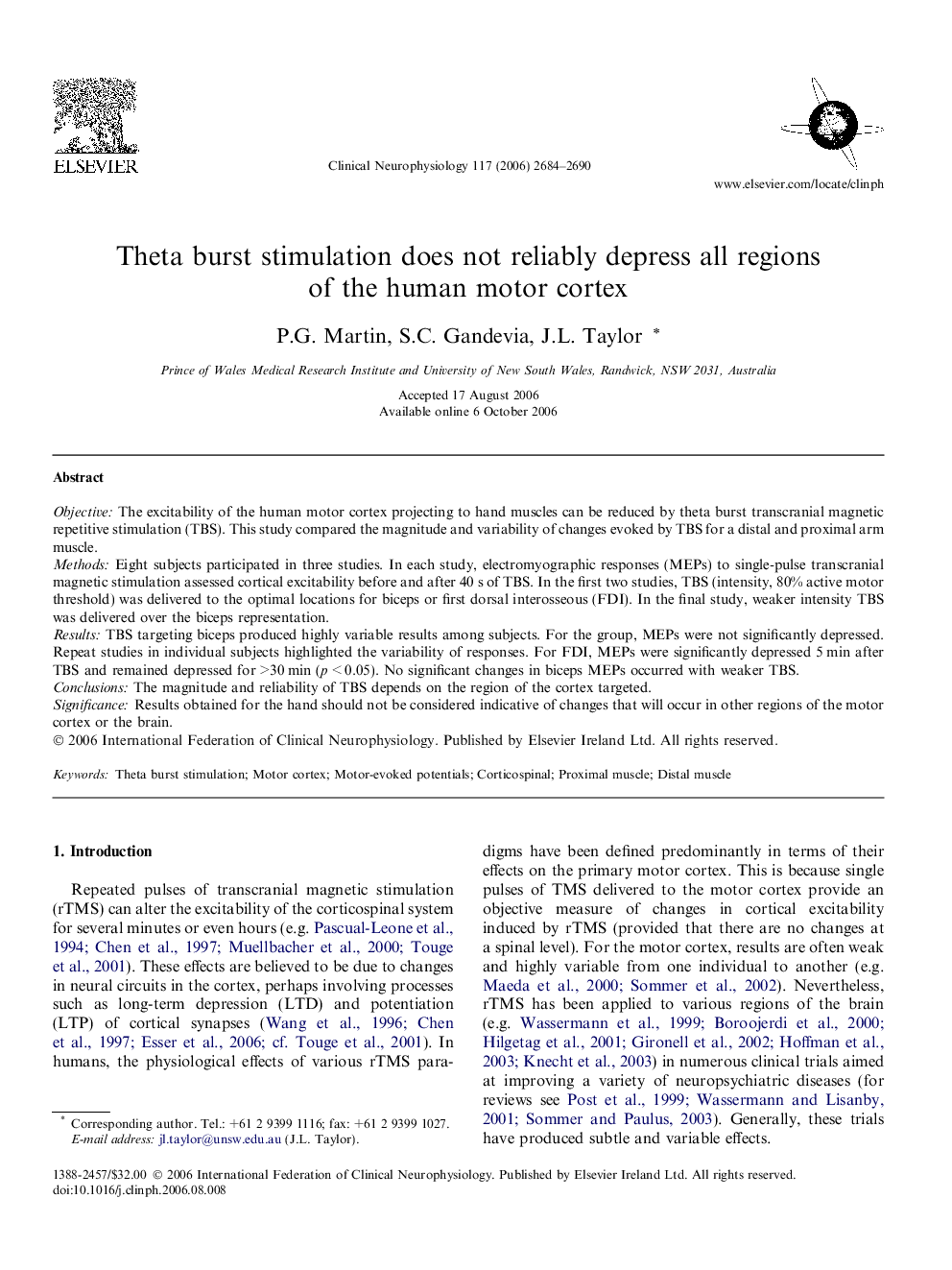| کد مقاله | کد نشریه | سال انتشار | مقاله انگلیسی | نسخه تمام متن |
|---|---|---|---|---|
| 3048336 | 1185079 | 2006 | 7 صفحه PDF | دانلود رایگان |

ObjectiveThe excitability of the human motor cortex projecting to hand muscles can be reduced by theta burst transcranial magnetic repetitive stimulation (TBS). This study compared the magnitude and variability of changes evoked by TBS for a distal and proximal arm muscle.MethodsEight subjects participated in three studies. In each study, electromyographic responses (MEPs) to single-pulse transcranial magnetic stimulation assessed cortical excitability before and after 40 s of TBS. In the first two studies, TBS (intensity, 80% active motor threshold) was delivered to the optimal locations for biceps or first dorsal interosseous (FDI). In the final study, weaker intensity TBS was delivered over the biceps representation.ResultsTBS targeting biceps produced highly variable results among subjects. For the group, MEPs were not significantly depressed. Repeat studies in individual subjects highlighted the variability of responses. For FDI, MEPs were significantly depressed 5 min after TBS and remained depressed for >30 min (p < 0.05). No significant changes in biceps MEPs occurred with weaker TBS.ConclusionsThe magnitude and reliability of TBS depends on the region of the cortex targeted.SignificanceResults obtained for the hand should not be considered indicative of changes that will occur in other regions of the motor cortex or the brain.
Journal: Clinical Neurophysiology - Volume 117, Issue 12, December 2006, Pages 2684–2690